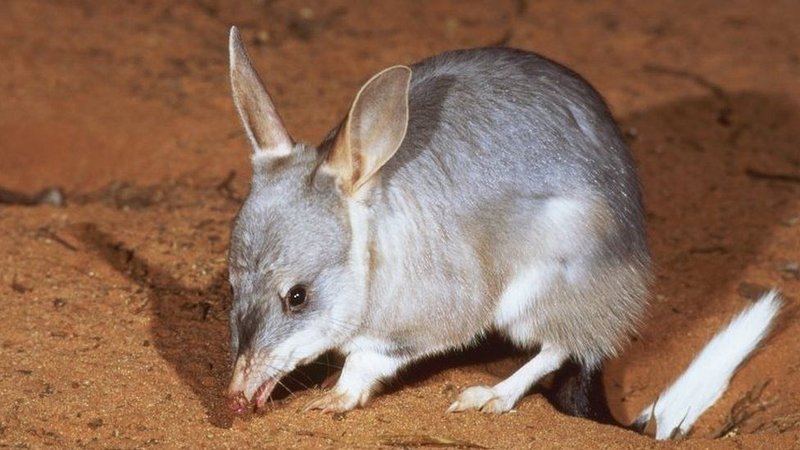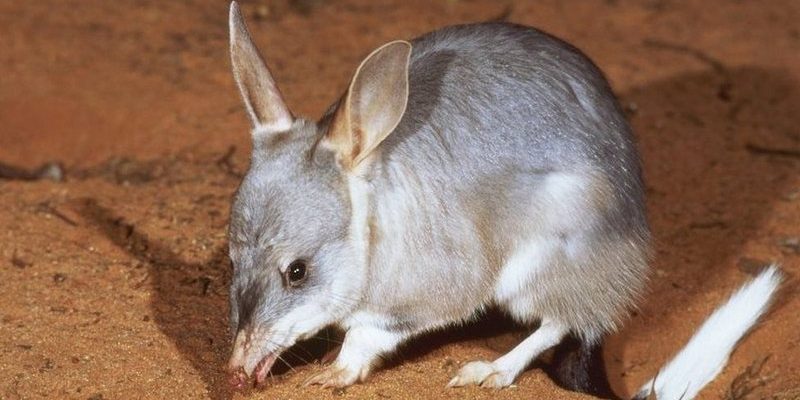
The bilby, a charming little creature, may not be a household name like the kangaroo or the koala, but it has a special place in the hearts of many Australians. With its long ears and charming, pointed snout, the bilby is often affectionately referred to as the “rabbit-eared bandicoot.” This nocturnal marsupial is a fascinating mix of quirks and adaptations that help it thrive in the rugged Australian environment. But what makes this creature so interesting? Let’s dig deeper into the life of the bilby.
Imagine a small, agile creature that scurries through the underbrush of the desert at night, foraging for food and evading predators. That’s the essence of a bilby! With its powerful hind legs, it can dig rapidly to uncover tasty snacks hidden beneath the surface, which include insects, seeds, and tubers. While bilbies may seem cute and cuddly, they face serious challenges due to habitat loss and competition with invasive species. Understanding their world can help us appreciate why conservation efforts are so crucial.
Physical Characteristics of Bilbies
Bilbies are easily recognizable thanks to their distinctive features. They have a sleek, elongated body covered in soft fur, which can vary in color from brown to gray. Their most notable features are their large ears that can measure up to 10 centimeters long. These ears not only provide excellent hearing, but they also help regulate their body temperature. You might say they act like natural air conditioners in the hot desert!
In terms of size, bilbies are relatively small, typically weighing between 1.5 to 2.5 kilograms and measuring around 29 to 54 centimeters long, not including their long, thin tails. Their tails can add an additional 30 to 40 centimeters to their length. This combination of agility and size makes bilbies well-suited for their environment. Their long snout is equipped with a sensitive nose, perfect for sniffing out food like insects and small roots underground.
Habitat and Distribution
Bilbies once roamed a vast swath of Australia, but their habitat has shrunk dramatically due to human activity. Nowadays, you can primarily find them in the arid regions of Western Australia, Queensland, and the Northern Territory. They thrive in areas with soft soils, which allow them to dig burrows easily. These burrows serve as their homes, providing shelter from both extreme temperatures and predators.
The bilby’s preference for dry, sandy environments means it’s well-adapted to survive in arid conditions. They’re nocturnal, which means they’re active at night, helping them avoid the heat of the day and find food. Their burrowing habits create intricate underground systems, allowing them to escape the harsh surface conditions above.
Diet and Feeding Habits
Now let’s talk about what bilbies eat! They are opportunistic feeders, which means they’ll munch on whatever is available. Their diet primarily consists of insects, seeds, fruits, and tubers. Bilbies have a keen sense of smell that helps them locate food underground, allowing them to dig up roots and snacks that other animals might miss. Think of them as nature’s little foragers!
One of their favorite treats is the sweet, fleshy roots of a plant called the “bush potato.” Not only is this food tasty, but it also provides them with the moisture they need to survive in their dry habitat. In fact, bilbies are excellent at conserving water, which is essential for living in such an arid environment.
Reproduction and Lifecycle
When it comes to reproduction, bilbies have some intriguing traits. They reach sexual maturity at about 4 to 6 months old. Breeding can occur at different times of the year, depending on food availability. Female bilbies usually give birth to litters of 1 to 3 joeys after a gestation period of about 12 days. Imagine a tiny, hairless joey that’s only the size of a peanut—quite a journey ahead!
After birth, the joeys climb into their mother’s pouch, where they continue to develop for several weeks. Once they are about 90 days old, they start to emerge from the pouch and stay close to their mother as they learn how to forage and dig. By around six months, they are ready to venture out on their own, making their way in the wild.
Conservation Status
Sadly, bilbies are classified as vulnerable due to habitat loss and competition with non-native species like cats and foxes. As humans expand urban areas and agriculture, the natural habitats where bilbies thrive are diminishing. Conservation efforts are critical to ensuring that these unique marsupials survive for future generations.
Organizations and wildlife groups are working tirelessly to protect bilby populations through breeding programs and habitat restoration initiatives. Some places even have bilby sanctuaries where you can witness these adorable creatures up close. Raising awareness about their plight is essential—every little bit helps in keeping the bilby alive and well!
Fun Facts about Bilbies
| Fact | Description |
|---|---|
| Scientific Name: | Macrotis lagotis |
| Size: | 29 to 54 cm long (not including tail) |
| Weight: | 1.5 to 2.5 kg |
| Habitat: | Arid and semi-arid regions of Australia |
| Diet: | Insects, seeds, fruits, and tubers |
| Reproduction: | 1-3 joeys per litter |
| Conservation Status: | Vulnerable |
FAQ
What is a bilby’s main predator?
Bilbies face threats from various predators, primarily non-native ones such as feral cats and foxes. These introduced species have significantly impacted bilby populations by preying on them and competing for food resources. In their native habitat, bilbies have fewer natural predators, making the presence of these invaders particularly damaging.
Are bilbies social animals?
Bilbies are somewhat solitary creatures. However, they can be found in pairs or small groups during mating season. They are known to be territorial, often marking their territory by digging distinctive holes and creating trails in the sand. While they may not be overly social, they do communicate with one another, using various vocalizations to signal their presence.
How can I help bilby conservation efforts?
There are several ways you can contribute to the conservation of bilbies. Educating yourself and others about their plight is a great start. Supporting wildlife organizations that work on bilby conservation or donating to their cause can also make a difference. Additionally, consider participating in local conservation programs or events to raise awareness and support for bilby habitat restoration initiatives.
Do bilbies dig burrows?
Yes! Burrowing is a vital part of a bilby’s lifestyle. They create extensive networks of burrows, which provide shelter from extreme weather conditions and protection from predators. Their burrowing activity also aerates the soil, benefiting other plants and animals in their ecosystem. It’s a win-win situation!
What do bilbies sound like?
Bilbies make a variety of sounds, including soft grunts, growls, and squeaks. These vocalizations can help them communicate with each other, especially during mating season. Interestingly, their sounds are often described as being quite cute and fitting for their endearing appearance!
How long do bilbies typically live?
In the wild, bilbies generally live around 3 to 5 years, although some individuals may reach up to 7 years under optimal conditions. In captivity, where they are protected from predators and have consistent access to food, they may live longer. The specific lifespan can depend on various factors, including diet, habitat quality, and overall health.
Can bilbies be kept as pets?
While they might seem like adorable pets, bilbies are wild animals and not suitable for domestication. They have specific dietary and environmental needs that can be challenging to meet in a home setting. Additionally, keeping bilbies as pets may pose ethical concerns and could negatively impact wild populations.
What plants do bilbies eat in the wild?
Bilbies are opportunistic feeders that enjoy a variety of plant sources. They favor native plants like the bush potato, which has fleshy roots rich in nutrition. Their diet also includes seeds and fruits from other native plants, allowing them to adapt as necessary based on food availability in their environment.
Are there any bilby sanctuaries in Australia?
Yes! There are several bilby sanctuaries across Australia where visitors can see these charming marsupials up close. Many of these sanctuaries focus on breeding programs and habitat restoration efforts to help protect bilby populations. Visiting a sanctuary not only allows you to learn more about bilbies but also supports their conservation.
Why are bilbies important to their ecosystem?
Bilbies play a critical role in their ecosystem as burrowers and foragers. Their digging helps aerate the soil, promoting plant growth and benefiting other species in the area. By controlling insect populations and contributing to seed dispersal, bilbies help maintain the balance of their environment, making their presence essential for a healthy ecosystem.

